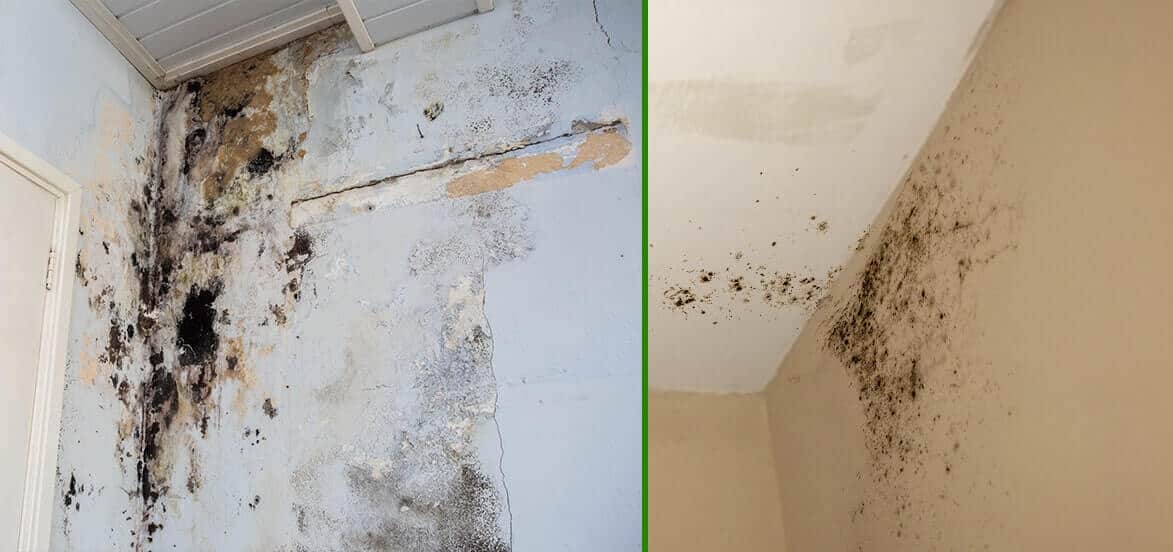Prevention of Mold on Ceilings and Walls
Mold is only one of the problems that might arise in a homeowner’s house. Mold, on the other hand, is not like other problems that might occur in a place; it can create serious health concerns and bring down the value of your property—because of this, getting rid of it as quickly as humanly possible is essential.
You cannot achieve that unless you are familiar with the appearance of Mold. Because fungus may take on a variety of forms, you might mistake some of them for yeast or mildew. Therefore, let’s take a more in-depth look at Mold and determine what sets it from other types of fungi and how to identify it.
What Exactly Is Mold?
Mold is a fungus that grows in multicellular structures known as hyphae. Mold may form on almost any organic material. These structures continue to expand and ultimately multiply into visible colonies, considered distinct living entities by the scientific community. Mold, mushrooms, and yeast are all examples of fungal organisms that are pretty similar to one another.
Mold is an essential component of the natural world. More precisely, it accelerates the natural decomposition process by accelerating the breakdown of organic substances such as wood, plant waste, and leaves.
It has the potential to wreak havoc on one’s respiratory system if it colonizes their house. It’s often the case for persons who have previously been diagnosed with asthma or another condition of a similar kind. It is recommended to have Mold Inspection San Diego CA in regular intervals.
How to Identify Mold in Your Home?
You may already be familiar with Mold appearance if you own your own house. But even if you don’t, there are a few telltale signs that can help you spot it right away:
Color
There is a good chance that you are acquainted with the green and white Molds since they are often seen on food that has gone bad. Or, if you’ve ever dealt with an infestation, you’ve probably come face to face with the dreaded black Mold that every specialist warns about. Mold may be any color or a mix of colors, including gray, tan, brown, red, blue, yellow, or any other hue imaginable. In other words, a wide variety of colors may take, and some of them are more hazardous than others.
Texture
Like the colors, one may find many different textures on the Mold. Some have a velvety and smooth appearance, while others have a fluffy, grainy, slimy, or spongy appearance. For instance, black Mold gives the impression that someone sprayed the wall with imperfections like leopard spots, and these dots get more prominent as the fungus spreads. Therefore, it is not safe to infer that a fungus is not Molded just because it does not have the characteristic fuzzy texture.
Smell
In most cases, individuals have a false impression that Mold has a musty, persistent, and exceedingly unpleasant odor. On the other hand, some people describe decay as earthy and meaty, while others say it smells like damp carpeting or rotting wood. Because of this, it should come as no surprise that Mold, depending on the conditions in which it grows, may produce a wide variety of smells.
But why does it have such a putrid odor? Mold gives out what is known as MVOCs, which stands for microbial volatile organic compounds. These glasses are emitted at various points during the life cycle of the Mold. And although they are often risk-free, several of these compounds are known to be hazardous to the health of both people and animals.
Also Read – What Can Be Done to Prevent Mold Growth in the Kitchen?
Preventing Mold on Ceilings and Bedrooms
The kitchen, the bathroom, the attic, and the basement are the most common areas people think of when they think of places where Mold often grows. On the other hand, Mold may spread throughout their bedrooms. The presence of Mold in bedrooms is on par with other Mold infestations. Mold in your bedroom, however, is far more hazardous to your health than Mold in any of the other rooms in your house.
Not only can it destroy the appearance and atmosphere of your room, but it may also lead to serious health issues and prevent you from getting a good night’s sleep. Because of this, it is essential to take preventative measures to avoid Mold on the walls and ceilings of the kitchen and bedroom.
What are the Roots of Mold in Bedrooms?
It is essential to have an understanding that Mold may develop on any material, including materials that are porous and natural, such as paper, cardboard, items made of wood, and, most significantly, ceiling tiles. Molded may also grow below the surfaces in your bedrooms, such as behind the wallpaper or the insulation. And even while the location you sleep in could seem devoid of clutter and squeaky clean, a few things might make your bedroom an ideal environment for Mold growth. Mold can only develop and spread when there is sufficient moisture present.
Unfortunately, the pipes, windows, or roof leaks in your home might cause you to create a concealed moisture problem if the spill is not dried within 48 hours, even a minor formation of Mold. So you need Mold removal in San Diego CA immediately. Mold grew due to high humidity or coon, which are outcomes of inadequate ventilation. Inside closets and behind are places that often have moisture and condensation levels due to airflow flow in such spaces.
What Can Be Done to Prevent Mold?
It is quite unlikely that you will be able to prevent Mold spores from invading that tiny spores may enter via open windows, vents, and other open airways. They can even attach themselves to pets. Consequently, the most effective method for avoiding a Mold infestation is to ensure that the circumstances in your bedroom are not conducive to the growth of most spores. It requires maintaining an appropriate humidity level, enhancing ventilation, and thoroughly cleaning up any accidents that may have occurred.
The following are some suggestions that ought to assist you in lowering the possibility of future Mold infestations:
- By opening your windows, you can ensure that your home has enough ventilation and circulation.
- You may lower the humidity in your Bedrocan using an air conditioner or a dehumidifier.
- Remove any furniture that is touching the wall.
- Any spills should be cleaned up and dried within 48 hours.
- It is important to avoid keeping piles of documents, clothes, or bedding unmoved for extended periods.
- Maintain breathing room in your closet by leaving space between the various objects.
- If condensation is a persistent problem in your bedroom, you should consider upgrading the insulation in the walls and ceiling.
- You should look for and remedy any water leaks that may be present in your home, or you should engage a Mold remediation Services San Diego to do so.
Trained professionals perform Mold remediation
It is a fact that Mold may be upsetting to look at. You may avoid a severe infestation and have a restful night’s sleep without worrying about any health problems if you take certain precautions and do routine maintenance. But even if Mold does wind up invading your home, there is no need to freak out over it! You always have the option of seeking assistance from a San Diego Mold Remediation firm that is professional.
Mold Solutions employs equipment of the highest quality to assist in the removal of all varieties of Mold. EZ Restoration USA can discover and eliminate Mold infestations because of our one-of-a-kind process. Don’t allow Mold the chance to take over your home—give us a call and let the Mold specialist San Diego take care of your Mold problems instead!



